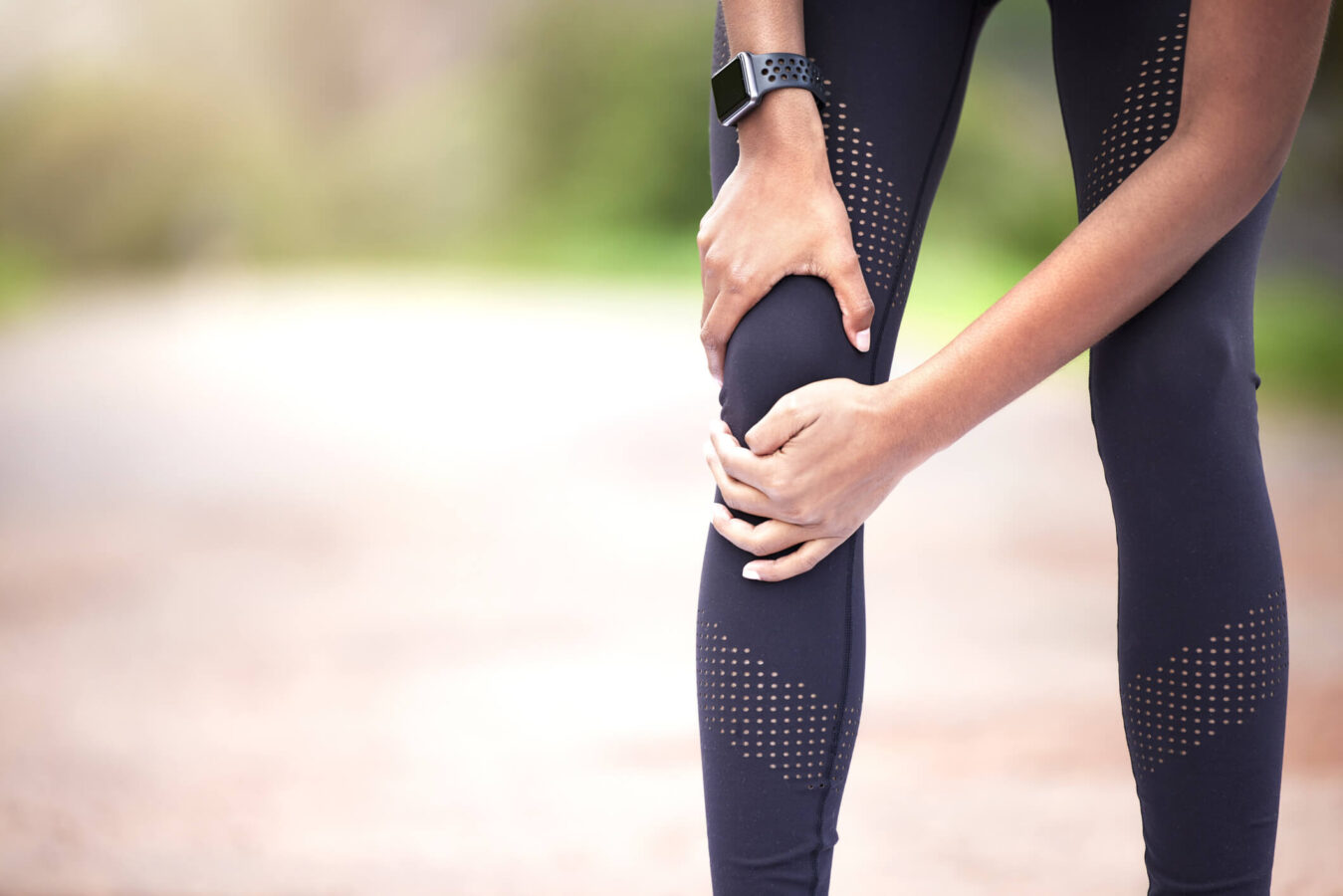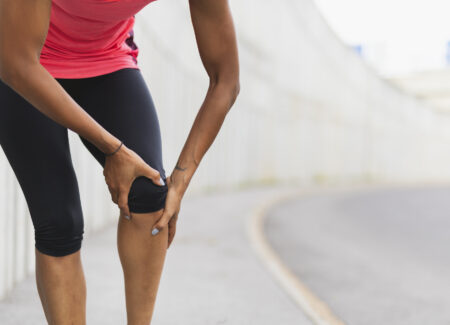
Running is an excellent form of exercise, offering a wealth of mental and physical benefits. But this repetitive, weight-bearing activity can also be hard on the body, especially the knees, which bear a good bit of impact. Knee injuries from running are quite common, accounting for half of the injuries reported by runners overall. If you want to learn how to prevent knee pain when running, keep reading to learn what causes runner’s knee, how to prevent common knee injuries, and what to do if you have nagging knee pain that won’t go away.
Running knee pain has several possible causes. Some have to do with external factors like poorly-fitting running shoes. Others have more to do with structures in and around the knee that become damaged through injury, disease, or overuse. Here are the most common causes of knee pain for runners.
Now that we’ve covered common knee injuries and symptoms runners experience, let’s focus on how to prevent runner’s knee.
The benefits of proper hydration before, during, and after a run are undeniable. Water helps to lubricate the body’s joints. That means a lower risk of joint-related knee pain, stiffness, and soreness. Lubricated joints allow for good range of motion which is essential for anyone who runs.
Fatigue, dizziness, and other dehydration symptoms can occur after losing just 1.5% of the body’s water. Men should aim for around 16 cups of water per day, and women aim for 11 cups every day. However, it is a good idea to consult a daily water intake calculator for more accurate recommendations based on your age, height, weight, and activity level.
Stretching before and after running also helps prevent knee pain—but not all stretches are alike. Dynamic stretches engage the specific muscles, ligaments, and soft tissues used during running to ensure they are warm and prepared for the strain they are about to experience. Runners should spend a few minutes doing dynamic stretches before they start. Good dynamic stretches for runners include side lunges and lateral leg swings.
Static stretches are recommended after running to reduce stiffness, lower the risk of muscle strains, and maintain good range of motion in the knee joints after activity. Quad stretches, hamstring stretches, IT band stretches, and calf stretches are ideal to protect and support healthy knee joints.
Building up the muscles that support and stabilize the knee joints can prevent knee pain among runners. Exercises designed to strengthen the group of muscles at the front of the thigh (quadriceps) and the muscles that extend the hip and flex the knee (hamstrings) are important, as are the muscles of the hips and bottom (glutes.)
If you have knee pain, it is important to see your healthcare provider and schedule a physical therapy screening to determine if and what exercises are safe based on your condition and symptoms. (Some knee injuries can worsen with activity.)
Start off slowly if you are new to running, coming off a knee injury, or are managing knee pain through physical therapy. Give your body time to adjust to the demands of this activity and to heal and recover along the way.
As a general rule, most running programs discourage against increasing your mileage by more than 10% every week. By gradually increasing your distance and stamina, you are less likely to overstress the knee joints and cause knee pain and injuries.
Believe it or not, your running shoe has a lot to do with the health of your knee joints. The wrong footwear can throw off your lower body alignment and increase stress on your knees. Every foot is different, and some people need a high level of support while some do better with minimal level of support.
Shoes should feel light and natural on your feet. They should encourage a healthy, normal gait that distributes weight and stress safely throughout the lower body. The ideal running shoes fit properly and contour your feet in all the right spots based on your gait.
If you tend to hold on to your sneakers until the soles are falling off, don’t. Experts recommend replacing your running shoes after 500 miles. Many smaller, locally-owned running stores have knowledgeable staff who will measure your foot and suggest certain models based on how you run.
Knee pain during running and other activities is a clue that something is going on in the body. It may be something as simple as switching out your sneakers or building up your quads. Or it can signal a more serious underlying issue. Knee pain that persists for more than a day or two or progressively gets worse should always be checked out. Knee pain can often be improved with home care and physical therapy.
In some cases. Pain with intense physical activity is not always indicative of an injury or structural issue, especially if you are just getting back into running. Mild soreness is common and generally caused by microtears in the muscles and tendons. As the body rests, those microtears heal and you become stronger.
After running, you can treat sore knees with the “Peace and Love” protocol for soft tissue injuries:
Protection: Avoid exertion for several days after an injury.
Elevation: Elevate the painful knee above the heart of possible.
Avoid anti-inflammatories:These medications can slow tissue healing.
Compression: Compress the painful knee with a bandage or tape to reduce swelling.
Education: Trust your body and avoid activities that aggravate stiff, swollen, or painful joints.
And
Load:Return to activity slowly and safely.
Optimism: A positive attitude is part of recovery from a knee injury.
Vascularization:Choose low-impact cardiovascular activity to increase blood flow to injured tissues.
Exercise:Increase strength and mobility with safe exercises (under the direction of your physical therapist.)
Home care for knee pain is not a permanent solution for a serious health condition. Persistent pain is our body’s way of letting us know something is wrong in the body that needs to be addressed.
If pain does not subside after a day or two, make an appointment with your healthcare provider and book a physical therapy screening to determine the underlying cause of knee pain. Running with a knee injury will only aggravate the problem, lead to chronic pain that can potentially sideline your running pastime indefinitely.
Many runners find physical therapy highly-effective for reducing pain and improving mobility and function in the knees. With targeted exercise, manual therapy, and other painless, noninvasive modalities, physical therapy helps patients of all ages and abilities feel and move better.
Even if you don’t have knee pain, physical therapy can help you improve your running posture and performance. To learn more about the benefits of physical therapy for knee pain, find a clinic near you.
